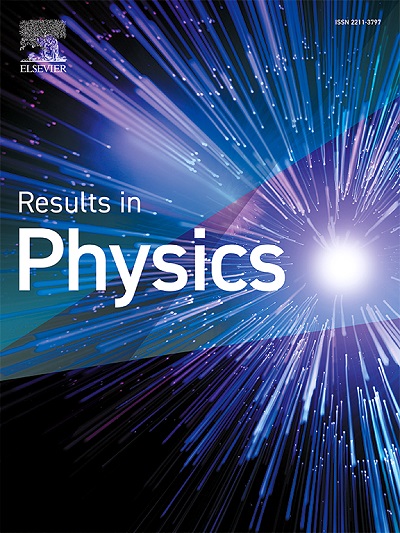可调表面浮雕液晶光栅偏振和衍射的动态控制
IF 4.6
2区 物理与天体物理
Q2 MATERIALS SCIENCE, MULTIDISCIPLINARY
引用次数: 0
摘要
光的精确相位控制是推进光子器件的必要条件。本研究提出了包含周期性SU-8光刻胶(PR)结构的电可调谐液晶(LC)表面起伏光栅(srg),具有显着的电光特性。SRG包括周期性地交替的pr包覆(区域B)和未包覆(区域a)区域。当施加直流电压时,a区在超过阈值电压时呈现透射率偏移,当电压降低时呈现不完全恢复。这种不可逆的行为可能源于离子向电极的迁移,产生了一个内部电场。相反,B区起到了有效的屏蔽作用,稳定了双电层,使透射率变化最小化。然而,交流刺激限制了离子迁移率,频率越高,导致阈值电压升高,特别是在b区。Stokes参数的分析进一步表明,光栅有助于在保持偏振稳定性的同时调节衍射顺序的电压。通过优化直流驱动方案,可以选择性地提高高衍射阶数,从而实现低电压操作和多阶衍射,这对广角全息显示至关重要。这些发现为动态光操纵的强大平台奠定了基础,为下一代可调谐光子系统和先进的显示技术铺平了道路。本文章由计算机程序翻译,如有差异,请以英文原文为准。
Dynamic control of polarization and diffraction in tunable Surface-Relief Liquid-Crystal gratings
The precise phase control of light is essential for advancing photonic devices. This study presents electrically tunable liquid–crystal (LC) surface-relief gratings (SRGs) comprising periodic SU-8 photoresist (PR) structures, showcasing notable electro-optical properties. The SRG comprises a periodicity of alternating PR-coated (Region B) and uncoated (Region A) regions. When a DC voltage is applied, Region A exhibits a transmittance shift upon exceeding a threshold voltage, with incomplete recovery when the voltage is reduced. This non-reversible behavior likely stems from ionic migration toward the electrodes, creating an internal electric field. Conversely, Region B acts as an effective shield, stabilizing the electric double layer and minimizing transmittance changes. However, AC stimuli restrict ionic mobility, with higher frequencies leading to increased threshold voltage, particularly in Region B. Analysis of the Stokes parameters further demonstrates that the grating facilitates voltage-controlled tuning of diffraction orders while maintaining polarization stability. By optimizing DC driving schemes, higher diffraction orders can be selectively enhanced, allowing for low-voltage operation and multi-order diffraction, which is crucial for wide-angle holographic displays. These findings lay the groundwork for a robust platform for dynamic light manipulation, paving the way for next-generation tunable photonic systems and advanced display technologies.
求助全文
通过发布文献求助,成功后即可免费获取论文全文。
去求助
来源期刊

Results in Physics
MATERIALS SCIENCE, MULTIDISCIPLINARYPHYSIC-PHYSICS, MULTIDISCIPLINARY
CiteScore
8.70
自引率
9.40%
发文量
754
审稿时长
50 days
期刊介绍:
Results in Physics is an open access journal offering authors the opportunity to publish in all fundamental and interdisciplinary areas of physics, materials science, and applied physics. Papers of a theoretical, computational, and experimental nature are all welcome. Results in Physics accepts papers that are scientifically sound, technically correct and provide valuable new knowledge to the physics community. Topics such as three-dimensional flow and magnetohydrodynamics are not within the scope of Results in Physics.
Results in Physics welcomes three types of papers:
1. Full research papers
2. Microarticles: very short papers, no longer than two pages. They may consist of a single, but well-described piece of information, such as:
- Data and/or a plot plus a description
- Description of a new method or instrumentation
- Negative results
- Concept or design study
3. Letters to the Editor: Letters discussing a recent article published in Results in Physics are welcome. These are objective, constructive, or educational critiques of papers published in Results in Physics. Accepted letters will be sent to the author of the original paper for a response. Each letter and response is published together. Letters should be received within 8 weeks of the article''s publication. They should not exceed 750 words of text and 10 references.
 求助内容:
求助内容: 应助结果提醒方式:
应助结果提醒方式:


